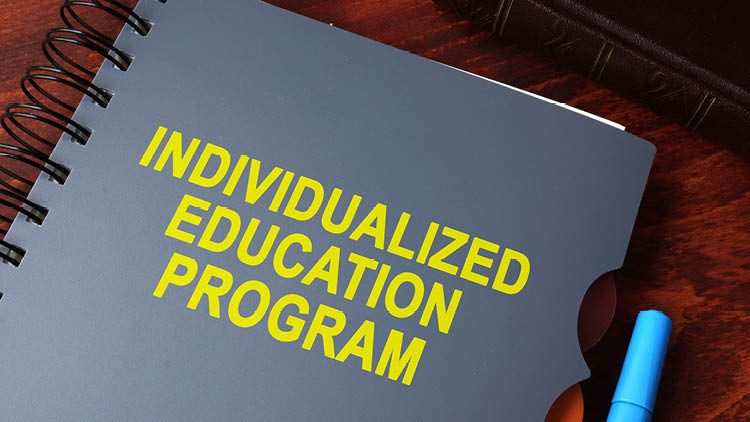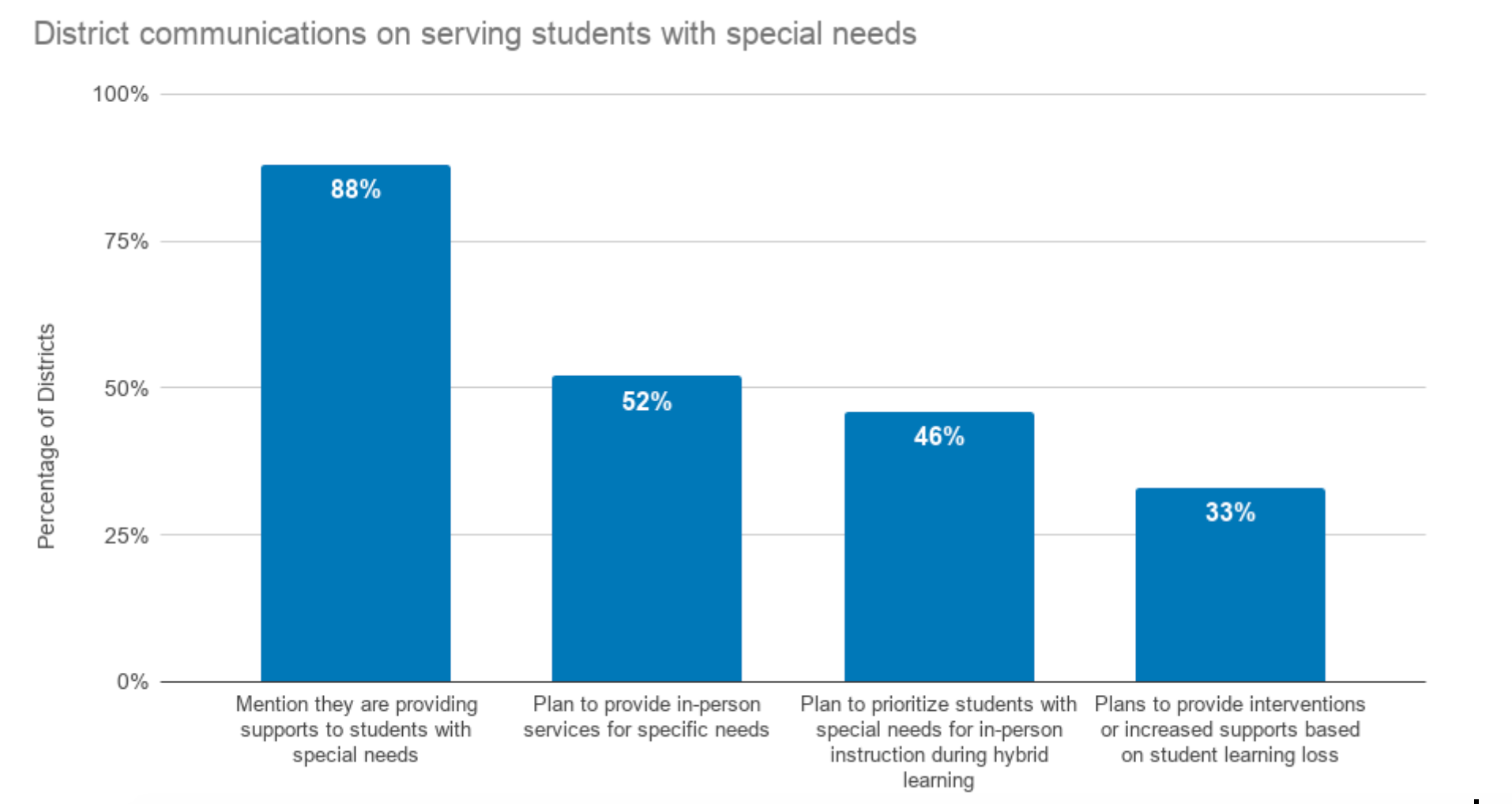When districts closed last spring, students with disabilities were suddenly cut off from receiving legally mandated therapeutic services that allow them to participate in school. Some families reported not even hearing from their child’s special education teachers for the remainder of the school year. Facebook groups filled with stories from parents at their wit’s end, trying to care for children for whom the disruption in their routines and schedules made them violent or sent them into deep depression. Other parents expressed fear that their child, already behind in school, would never be able to catch up after losing essential academic support.
In many parts of the country at least one, and possibly two, entire cohorts of older students with more profound disabilities are about to age out of school without the life skills and other transition supports they need for independent living.
It’s unconscionable.
Districts had all summer to address the concerns that special education families raised this spring. Yet, in many school systems, special education was largely an afterthought in districts’ planning for fall reopening.
Very few districts in our review of 106 reopening plans have addressed special education explicitly and in enough detail to assess how they intend to support students with disabilities. Most district plans we reviewed (88 percent) at least mention special education, but that is a low bar, and it means more than one in ten do not even mention students with disabilities in their reopening plans.
As a result, many parents remain in the dark about how their children will receive legally mandated special education services and instruction.
Just over half (52 percent) of districts in our review said they planned to prioritize students with disabilities for in-person support in various ways. Districts like Broward County in Florida brought students with disabilities back to their buildings first when they reopened in late fall.
But prioritizing building access for students with disabilities isn’t enough. It doesn’t allow students with disabilities to learn alongside their peers in the least-restrictive learning environment possible—which is critical to their social and intellectual development and a foundational promise of federal special education laws.
It also doesn’t undo the harms students with disabilities may have suffered this spring. Only one in three (33 percent) of the district plans we reviewed say they will provide interventions or increased supports to address lost learning time for students with disabilities.
The typical remedy for failure to provide legally mandated services under the Individuals with Disabilities Education Act is called compensatory education, where districts are expected to make students whole for the services they failed to provide via funds for tutoring or other specialized services. Just 2 of the 106 districts we reviewed (Boulder Valley, Colorado, and Fresno, California) specifically mention plans to provide compensatory services—possibly in response to parent complaints.
Families with knowledge of their rights and the means to sue will likely be made whole. Many parents have filed lawsuits against districts and states, demanding that their districts provide these compensatory services and allow their child to return to classrooms with their peers. Other families, however, may not even know what their child is entitled to, much less have the means to pursue legal action.
The steps districts must take to support students with disabilities effectively are a legal and moral obligation and will ultimately benefit all students who may have been harmed by this crisis. It is possible for districts to take these steps. Though rare, we have seen examples of districts with strong plans to assess learning loss, understand student needs, and provide individualized support.
For example, Tulsa Public Schools will hold six “inter-sessions”—periodic breaks throughout the school year where schools will have flexible time to provide targeted tutoring and other support. The district’s reopening plan outlines a detailed system of tiered support for students with different needs, and clearly identifies which adults are responsible for instruction and intervention for different groups of students.
Unlike most districts we reviewed, California’s Santa Ana Unified School District emphasized ongoing communication with families and between staff during remote learning, something that our previous studies found is vital to effective special education. The district provides detailed records of services the child received, communications, and consultations.
Boulder Valley has a detailed special education plan, but more importantly, it recognizes that, now more than ever, districts must provide individualized support to every student. As the district says on its website: “We begin with differentiating instruction for every student and then work with students and parents to provide additional accommodations, modifications and services for those who need it.”
School districts urgently need to set clear expectations for how they plan to address learning loss and social regression, and how they will meet each individual student’s unique needs. The teams of educators responsible for Individualized Education Programs (IEPs) should create individualized remote learning plans to outline these expectations for each student with a disability.
Sadly, most districts are operating in a leadership vacuum, with scant and sometimes shifting guidance from the federal government and little in the way of clear expectations from states. School and district leaders should not wait on regulatory guidance to act. They should immediately begin to combat learning loss and regression for students with disabilities. Schools that met remotely with parents to update students’ IEPs, even when they weren’t legally required to do so, found those meetings provided a basis for goal-setting and clearer communication.
It is also not too late for states and the federal government to step up to their responsibilities to enforce IDEA. States could require districts to announce steps they will take to make students with disabilities whole for lost instructional, therapeutic, and social-emotional service hours. They could also require districts to show they are using evidence-based assessments, curriculum, and interventions. They could hold districts accountable for ensuring that older students get the skills they need to transition to independent living, careers, and college. These steps would address the crisis of the moment and lay the groundwork for meaningful accountability that has long been absent in special education.
Students with disabilities and their families are in crisis. They can’t afford to wait for local, state, and national governments to put out other fires before they turn to their needs. It’s a moral imperative that they not be an afterthought.






